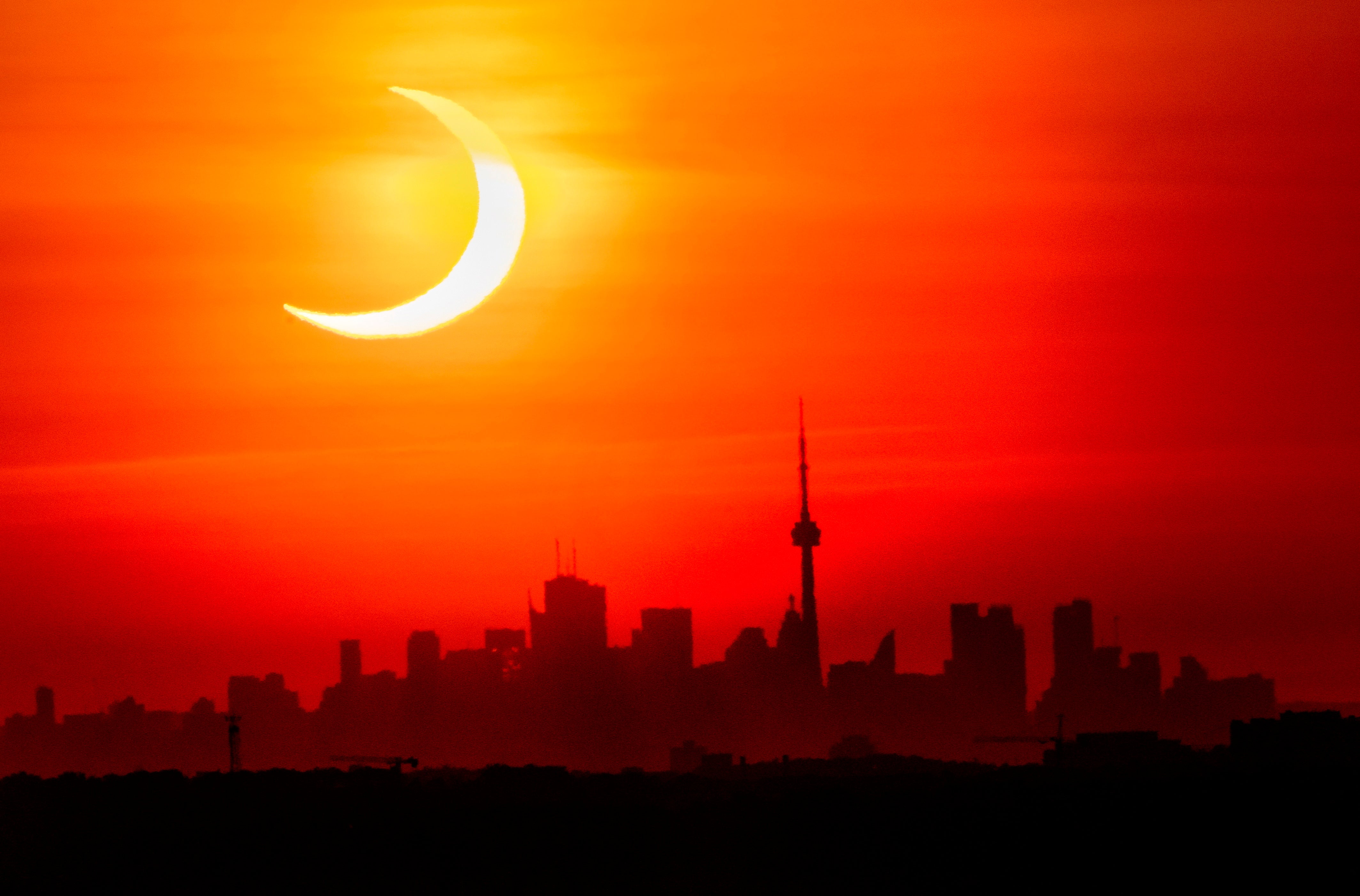Sunrise special: Solar eclipse thrills world's northern tier
The top of the world got a sunrise special _ a “ring of fire” solar eclipse

Your support helps us to tell the story
From reproductive rights to climate change to Big Tech, The Independent is on the ground when the story is developing. Whether it's investigating the financials of Elon Musk's pro-Trump PAC or producing our latest documentary, 'The A Word', which shines a light on the American women fighting for reproductive rights, we know how important it is to parse out the facts from the messaging.
At such a critical moment in US history, we need reporters on the ground. Your donation allows us to keep sending journalists to speak to both sides of the story.
The Independent is trusted by Americans across the entire political spectrum. And unlike many other quality news outlets, we choose not to lock Americans out of our reporting and analysis with paywalls. We believe quality journalism should be available to everyone, paid for by those who can afford it.
Your support makes all the difference.The top of the world got a sunrise special Thursday — a “ring of fire” solar eclipse.
This so-called annular eclipse began at the Canadian province of Ontario then swept across Greenland the North Pole and finally Siberia as the moon passed directly in front of the sun.
An annular eclipse occurs when a new moon is around its farthest point from us and appearing smaller, and so it doesn’t completely blot out the sun when it's dead center.
The upper portions of North America Europe and Asia enjoyed a partial eclipse, at least where the skies were clear. At those locations, the moon appeared to take a bite out of the sun.
It was the first eclipse of the sun visible from North America since August 2017, when a dramatic total solar eclipse crisscrossed the U.S. The next one is coming up in 2024.
A total lunar eclipse graced the skies two weeks ago.
___
The Associated Press Health and Science Department receives support from the Howard Hughes Medical Institute’s Department of Science Education. The AP is solely responsible for all content.